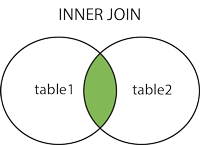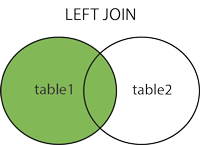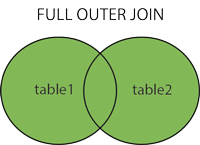A field with a NULL value is a field with no value.
If a field in a table is optional, it is possible to insert a new record or update a record without adding a value to this field. Then, the field will be saved with a NULL value.
NB A NULL value is different from a zero value or a field that contains spaces. A field with a NULL value is one that has been left blank during record creation.
NULL values cannot be compared with normal comparison operators. NULL values can only be assessed or tested using IS NULL or IS NOT NULL operators instead.
# This statement below is listing all customers with a NULL value in the 'ADDRESS' field.
SELECT CustomerName, ContactName, Address
FROM Customers
WHERE Address IS NULL;
# This statement below is listing all customers with a value in the 'ADDRESS' field.
SELECT CustomerName, ContactName, Address
FROM Customers
WHERE Address IS NOT NULL;
UPDATE statement is used to modify the existing records in a table.
# The following statement updates the first customer with a new contact person and a new city
UPDATE Customers
SET ContactName = 'Alfred Schmidt', City = 'FrankFurt'
WHERE CustomerID = 1;NB If you do not use WHERE, update statement updates all records! Be careful with that.
Use WHERE clause that determines how many records will be updated.
# The following statement will update the contactname to 'Juan' for all records where country is 'Mexico'
UPDATE Customers
SET ContactName = 'Juan'
WHERE Country = 'Mexico'Delete statement is used to delete existing records in a table.
NB If you do not use WHERE clause in the DELETE statement, all records in the table will be deleted!
DELETE FROM Customers WHERE CustomerName='Alfreds Futterkiste';SQL supports LIMIT statement to list the first or top few records from tables.
SELECT * FROM Customers
LIMIT 3;
SELECT * FROM Customers
WHERE Country='Germany'
LIMIT 3; MIN() returns the smallest value of the selected column
MAX() function returns the largest value of the selected column.
SELECT MIN(Price) AS SmallestPrice
FROM Products;
SELECT MAX(Price) AS LargestPrice
FROM Products;
COUNT() returns the number of rows that matches specified criteria.
AVG() function returns the average value of a numeric column
SUM() function returns the total sum of a numeric column
--COUNT() EXAMPLE
SELECT COUNT(ProductID)
FROM Products;
--AVG() Example
SELECT AVG(Price)
FROM Products;
--SUM()
SELECT SUM(Quantity)
FROM OrderDetails
The LIKE operator is used in a WHERE clause to search for a specified pattern in a column.
- % - represents zero, one, or multiple characters
- _ - represents a single character
-- WHERE CustomerName LIKE 'a%' - > Finds any value starts with "a"
-- WHERE CustomerName LIKE '%a' - > Finds any value end with 'a'
-- WHERE CustomerName LIKE '%or%' -> Finds any values that have 'or' in any position
-- WHERE CustomerName LIKE '_r%' -> Finds any values that have 'r' in the second position
-- WHERE CustomerName Like 'a__%' -> Finds any values that start with 'a' and are at least 3 characters in length
-- WHERE ContactName LIKE 'a%o' -> Finds any values that start with 'a' and ends with 'o'
Examples
-- Selects all customers with CustomerName starting with 'a'
SELECT * FROM Customers
WHERE CustomerName LIKE 'a%';
-- Selects all customers with CustomerName ending with 'a'
SELECT * FROM Customers
WHERE CustomerName LIKE '%a';
-- Selects all customers with CustomerName that have 'or' in any position
SELECT * FROM Customers
WHERE CustomerName LIKE '%or%';
-- Selects all customers with a CustomerName that have 'r' in the second position
SELECT * FROM Customers
WHERE CustomerName LIKE '_r%';
-- Selects all customers with CustomerName that starts with 'a' and are at least 3 characters in length
Select * FROM Customers
WHERE CustomerName LIKE 'a__%';
-- Selects all customers with ContactName that starts with 'a' ends with 'o'
SELECT * FROM Customers
WHERE ContactName LIKE 'a%o';
-- Selects all customers with Customername THAT DOES NOT START with 'a'
SELECT * FROM Customers
WHERE CustomerName NOT LIKE 'a%';
-- Selects all customers with a City starting with 'ber'
SELECT * FROM Customers
WHERE City LIKE 'ber%';
-- Selects all customers with a City containing the patterns 'es'
SELECT * FROM Customers
WHERE City LIKE '%es%';
-- Selects all customers with a City starting with any character, followed by 'ondon'
SELECT * FROM Customers
WHERE City LIKE '_ondon';
-- Selects all customers with a City starting with "L", followed by any character,
-- followed by 'n', followed by any character, follwed by 'on':
SELECT * FROM Customers
WHERE City LIKE 'L_n_on';
-- Selects all customers with a City starting with 'b', 's', or 'p'
SELECT * FROM Customers
WHERE City LIKE '[bsp]%';
-- Selects all customers with a City starting with 'a', 'b' or 'c'
SELECT * FROM Customers
WHERE City LIKE '[a-c]%';
-- Selects all customers with a City NOT starting with 'b','s' or 'p'
SELECT * FROM Customers
WHERE City LIKE '[!bsp]%'
--or
SELECT * FROM Customers
WHERE City NOT LIKE '[bsp]%';
The IN operator allows you to specify multiple values in a WHERE clause
-- Selects all customers that are located in 'Germany', 'France' or 'UK'
SELECT * FROM Customers
WHERE Country IN ('Germany', 'France', 'UK')
-- Selects all Customers that are NOT located in 'Germany', 'France' or 'UK'
SELECT * FROM Customers
WHERE Country NOT IN ('Germany', 'France', 'UK');
-- selects all customers that are from the same countries as the suppliers
SELECT * FROM Customers
WHERE Country IN (SELECT Country FROM Suppliers)
The BETWEEN operator selects values within a given range. The values can be numbers, text, dates.
-- Selects all products with a price between 10 and 20
SELECT * FROM Products
WHERE Price BETWEEN 10 AND 20;
-- Display the products outside the range of the previous example
SELECT * FROM Products
WHERE Price NOT BETWEEN 10 AND 20;
-- Selects all products with a price between 10 and 20. Not With a cateogory ID of 1,2 or 3
SELECT * FROM Products
WHERE Price BETWEEN 10 AND 20
AND NOT CategoryID IN (1,2,3)
-- Selects all products with a ProductName BETWEEN Carnarvon Tigers and Mozzarella di Giovanni
SELECT * FROM Products
WHERE ProductName BETWEEN 'Carnarvon Tigers' AND 'Mozzarella di Giovanni'
ORDER BY ProductName;
-- Selects all products with a ProductName Between Carnarvon Tigers and Chef Anton's Cajun Seasoning
SELECT * FROM Products
WHERE ProductName BETWEEN 'Carnarvon Tigers' AND 'Chef Anton's Cajun's Seasoning'
ORDER BY ProductName
SQL aliases are used to give a table, or a column in a table, a temporary name.
Aliases are often used to make column names more readable.
Alias for Columns Examples
SELECT CustomerID AS ID, CustomerName AS Customer
FROM Customers;
-- Two aliases, one for the CustomerName and the another for ContactName
SELECT CustomerName AS Customer, ContactName AS [Contact Person] FROM Customers;
-- Creates an alias named 'Address' that combine four columns(Address, PostalCode, City and Country)
SELECT CustomerName, Address + ', ' + PostalCode + ' ' + City + ', ' + Country
AS Address FROM Customers;
A JOIN Clause is used to combine rows from two or more tables, based on a related column between them.
-- Create the INNER JOIN that selects records that have matching values in both tables.
SELECT Orders.OrderID, Customers.CustomerName, Orders.OrderDate FROM Orders
INNER JOIN Customers ON Orders.CustomerID = Customers.CustomerID;INNER JOIN - Returns records that have matching values in both tables.
**LEFT (OUTER) JOIN **- Returns all records from the left table, and the matched records from the right table.
RIGHT (OUTER) JOIN - Returns all records from the right table, and the matched records from the left table
FULL(OUTER) JOIN- Returns all records when there is a match in either left or right table
-- Selects all orders with customer information
SELECT Orders.OrderId, Customers.CustomerName
FROM Orders
INNER JOIN Customers ON Orders.CustomerID = Customers.CustomerID;
-- Selects all orders with customer and shipper information
SELECT Orders.OrderID, Customers.CustomerName, Shippers.ShipperName FROM
(
(Orders INNER JOIN Customers ON Orders.CustomerID = Customers.CustomerID)
INNER JOIN Shippers ON Orders.ShipperID = Shippers.ShipperID);
The LEFT JOIN keyword returns all records from the left table and the matched records from the right table. The result is NULL from the right side, if there is no match.
SELECT Customers.CustomerName, Orders.OrderID
FROM Customers
LEFT JOIN Orders ON Customers.CustomerID = ORders.CustomerID
ORDER BY Customers.CustomerName;The RIGHT JOIN keyword returns all records from the right table and the matched records from the left table. The result is NULL from the left side, when there is no match.
-- Return all employees, and any orders they might have placed
SELECT Orders.OrderID, Employees.LastName, Employees.FirstName From Orders
RIGHT JOIN Employees ON Orders.EmployeeID = Employees.EmployeeID
ORDER BY Orders.OrderID;
The FULL OUTER JOIN Keyword returns all records when there is a match in left or right table records
SELECT Customers.CustomerName, Orders.OrderID
FROM Customers
FULL OUTER JOIN Orders ON Customers.CustomerID=Orders.CustomerID
ORDER BY Customers.CustomerName;
The UNION operator is used to combine the result-set of two or more SELECT statements
- Each select statements within UNION must have the same number of columns
- The columns must also have similar data types
- The Columns in each SELECT statement must also be in the same order
-- Returns the cities (Only distinct Values) from both the
-- "Customers" and 'Suppliers' table
SELECT City FROM Customers
UNION
SELECT City FROM Suppliers
ORDER BY City;
-- Returns the cities (Duplicate values also) from both the 'Customers' and 'Suppliers'
SELECT City FROM Customers
UNION ALL
SELECT City FROM Suppliers
ORDER BY City;
-- Returns the German cities (Only Distinct Values) from both the 'customers' and the 'Suppliers'
SELECT City, Country FROM Customers
WHERE Country='Germany'
UNION
SELECT City, Country FROM Suppliers
WHERE Country='Germany'
ORDER BY City;
-- Returns the German Cities (Duplicate values also) from both the Customers and The Suppliers Table
SELECT City, Country FROM Customers
WHERE Country='Germany'
UNION ALL
SELECT City, Country FROM Suppliers
WHERE Country='GERMANY'
ORDER BY City;
The GROUP BY statement groups rows that have the same values into summary rows, like 'find the number of customers in each country'
The GROUP BY statement is often used with aggregate functions (COUNT, MAX, MIN, SUM. AVG) to group the result-set by one or more columns
-- lists the number of customers in each country
SELECT COUNT(CustomerID), Country
FROM Customers
GROUP BY Country;
-- lists the number of customers in each country, sorted high to low
SELECT COUNT(CustomerID), Country
FROM Customers
GROUP BY Country
ORDER BY Count(CustomerID) DESC;
-- lists the number of orders sent by each shipper
SELECT Shippers.ShipperName, Count(Order.OrderID) AS NumberOfOrders FROM
Orders
LEFT JOIN Shippers ON Orders.ShipperID = Shippers.ShipperID
GROUP BY ShipperName;
The HAVING clause was added to SQL because the WHERE keyword could not be used with aggregate functions.
-- Lists the number of customers in each country. Only include countries with more than 5
-- 5 customers.
SELECT COUNT(CustomerID), Country
FROM Customers
GROUP BY Country
HAVING COUNT(CustomerID) > 5;
-- Lists the number of customers in each country,
-- sorted high to low
SELECT COUNT(CustomerID), Country
FROM Customers
GROUP BY Country
HAVING COUNT(CustomerID) > 5
ORDER BY COUNT(CustomerID) DESC;
The EXISTS Operator is used to test for the existence of any record in a subquery.
The EXISTS operator returns true if the subquery returns one or more records.
-- returns TRUE and lists the suplliers with a product price less than 20
SELECT SupplierName
FROM Suppliers
WHERE EXISTS (SELECT ProductName FROM Products WHERE Products.SupplierID = Suppliers.SupplierID AND Price < 20);



